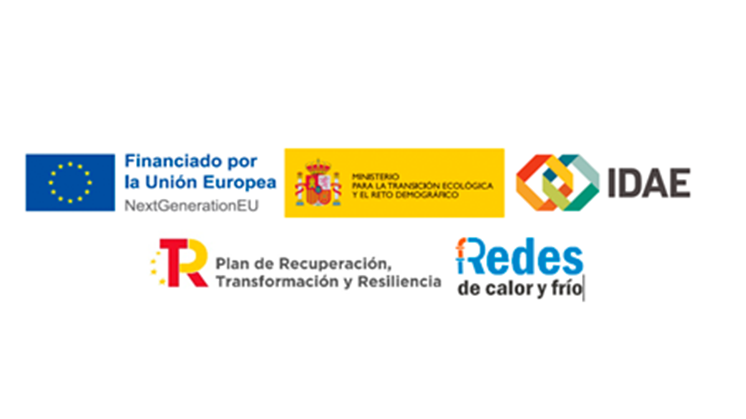“Red de calor y frío renovable” (Renewable heat and cooling network) project - Palencia
“Red de Calor in Palencia”: Innovation in thermal management for a sustainable future
“Red de calor y frío renovable - Palencia” is a project financed by the European Union - NextGenerationEU in the framework of the Recovery, Transformation and Resilience Plan.

Red de Calor in Palencia




Iberdrola reaffirms its commitment to decarbonisation with the deployment of its first renewable heat network in Palencia to supply heating and hot water to homeowners' associations, industries and government buildings − with an estimated investment of €36 million.
The heat network, for which the City Council approved a 50-year concession after accepting the conditions set out in the plenary session of 1 December 2023, is in process and focused on the various works that will run mainly through the neighbourhoods of Pan y Guindas, Centro, Allende del Río, San Juanillo, Avenida de Madrid, San Pablo y Santa Marina, San Antonio, Santiago, Ave María and El Cristo.
The goal of “Red de calor y frío renovable - Palencia” project
The main objective of “Red de calor y frío renovable - Palencia” project is to create a heat generation plant, using different technologies and sources of energy generation – always renewable – such as biomass boilers and heat pumps with aerothermal use, and a distribution network to the locations previously mentioned that will meet the corresponding demand for heating and domestic hot water.
In this way, the aim of this project is to make a more effective and efficient use of energy, replacing the fossil energies currently used for renewable energies (clean, sustainable, economical and efficient).
For this purpose, a heat generation plant with biomass boilers and the use of four aerothermal heat pumps and two water-to-water heat pumps will be implemented within the framework of the project.
The heat network will be over 25 kilometres long and will have around 200 exchange stations, which will cover 57% of the city's annual demand. The total capacity of the network will be over 86% to cover an estimated demand of 90,000 MWh/year.
Finally, it is important to highlight that this type of centralised system has a number of advantages over individualised systems, including, among others:
- Increased energy efficiency. Compared to stand-alone systems, centralised systems, as they are higher power systems, have more complex and efficient technology.
- Centralised air pollution control, with a much more controlled and focused impact.
- CO2 emissions reduction to cover the demand for domestic hot water, heating and air conditioning.
- Decreased consumption of oil and natural gas fuels, with their corresponding independence from supply and price variations in other countries.
- Full use of resources when the heat source is generated in the region itself and in neighbouring regions.
- Centralised maintenance of installations that building owners and users do not have to take care of.
- Layout of a reliable and constant heating space, decreasing the risk of accidents by reducing the individual operation of installations.
Iberdrola heat networks
Currently, we are developing a portfolio of 37 projects with a potential of over 4 TWht/year in the cities of Spain with greater potential, 22 heat networks (~2.8 TWht in cold areas with high population density) and 15 additional heat networks pending study (~1.2 TWht).





